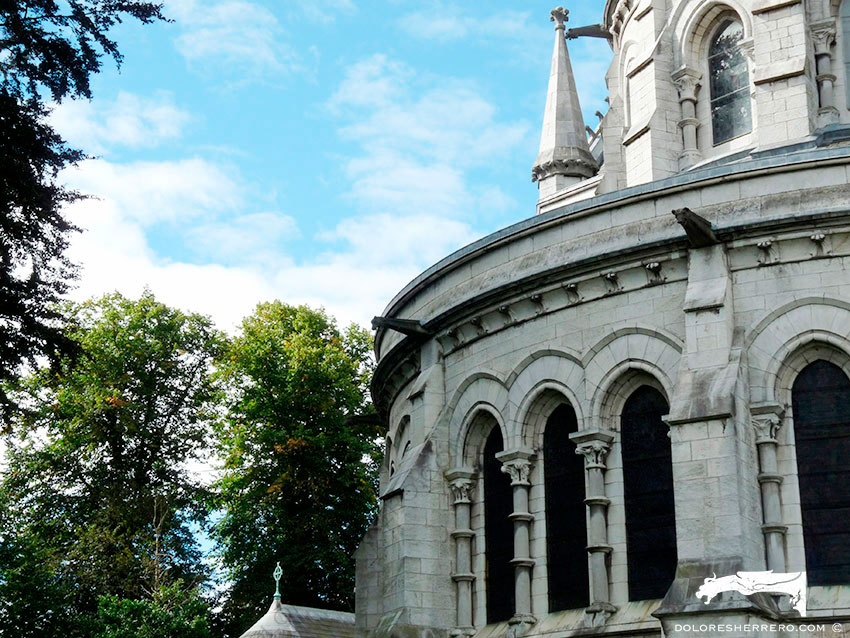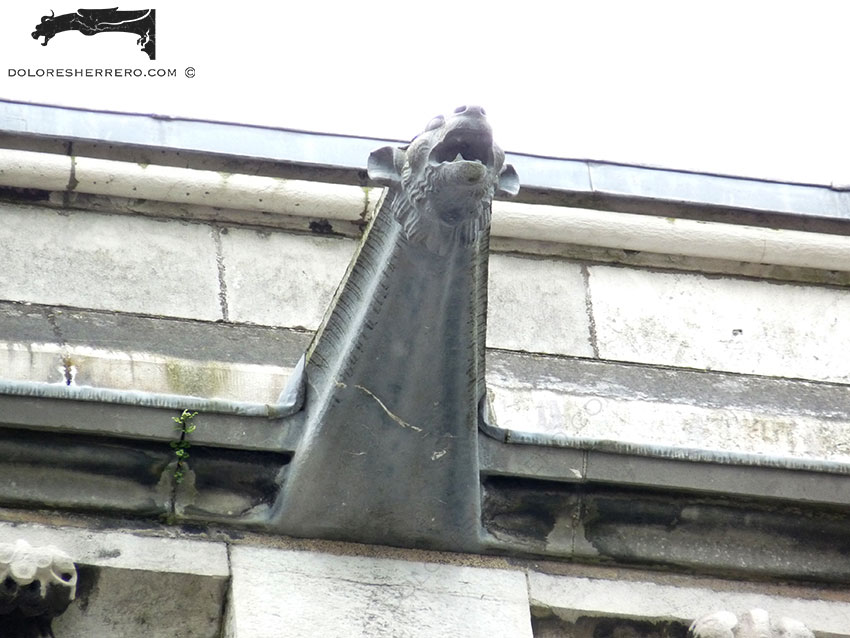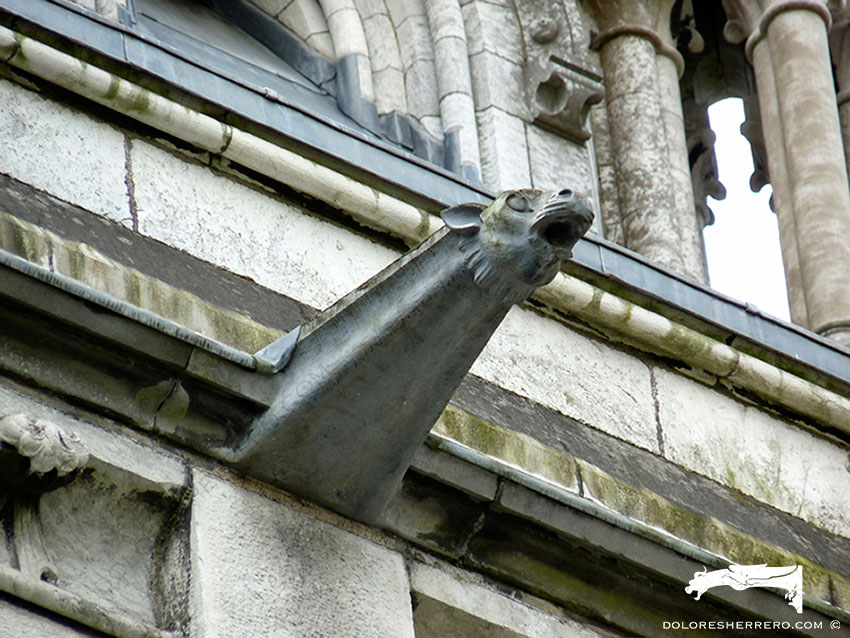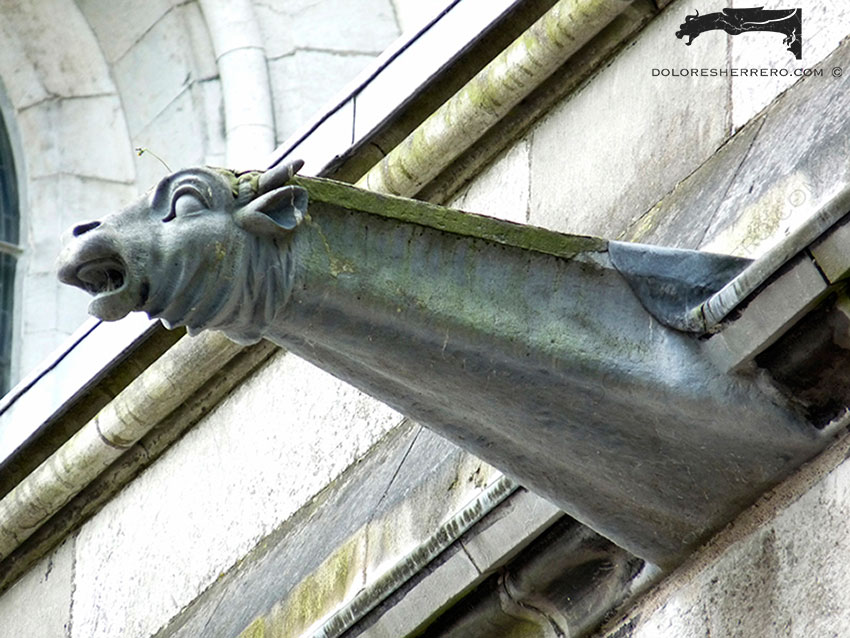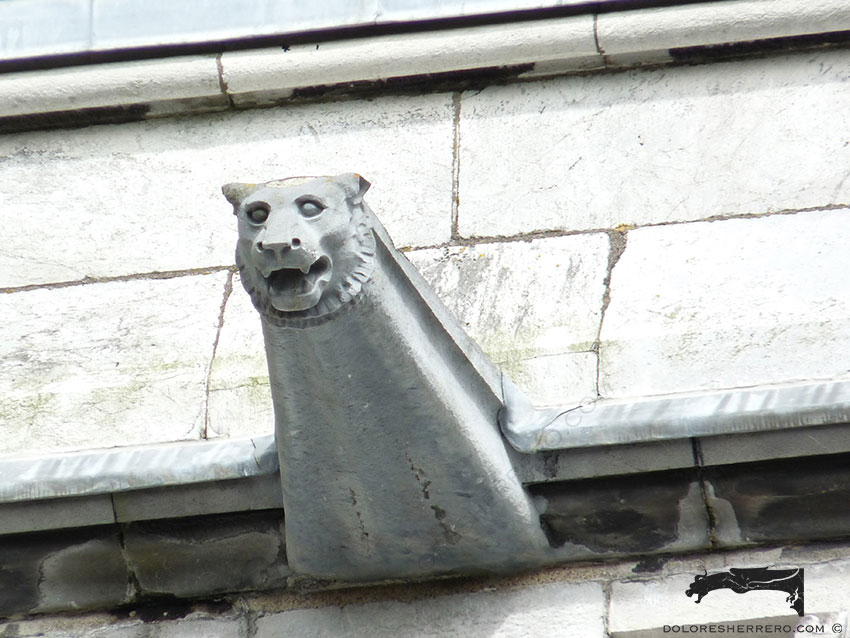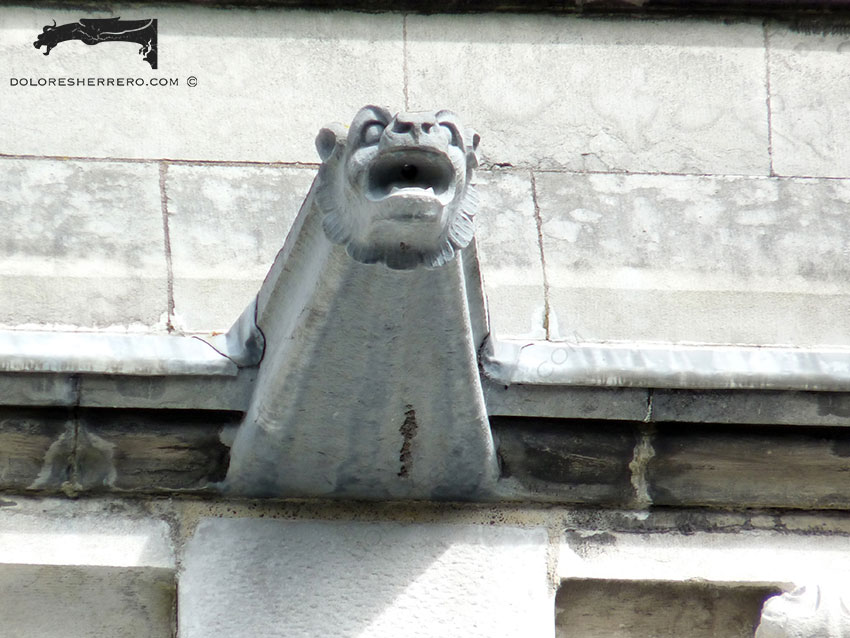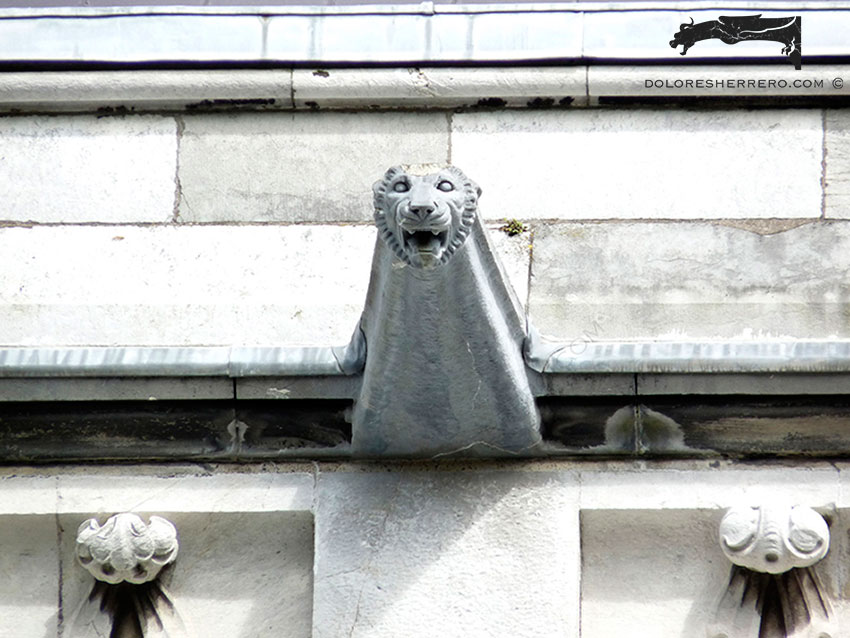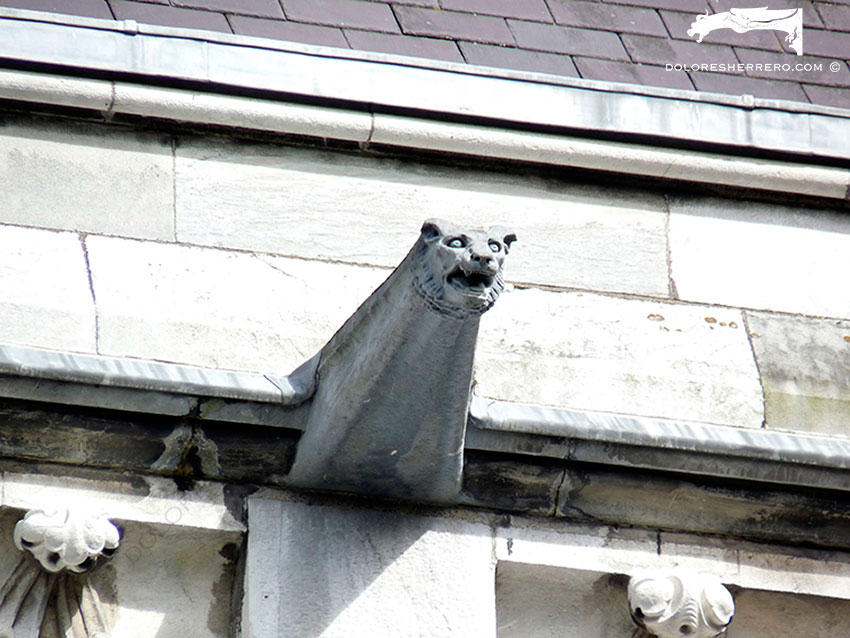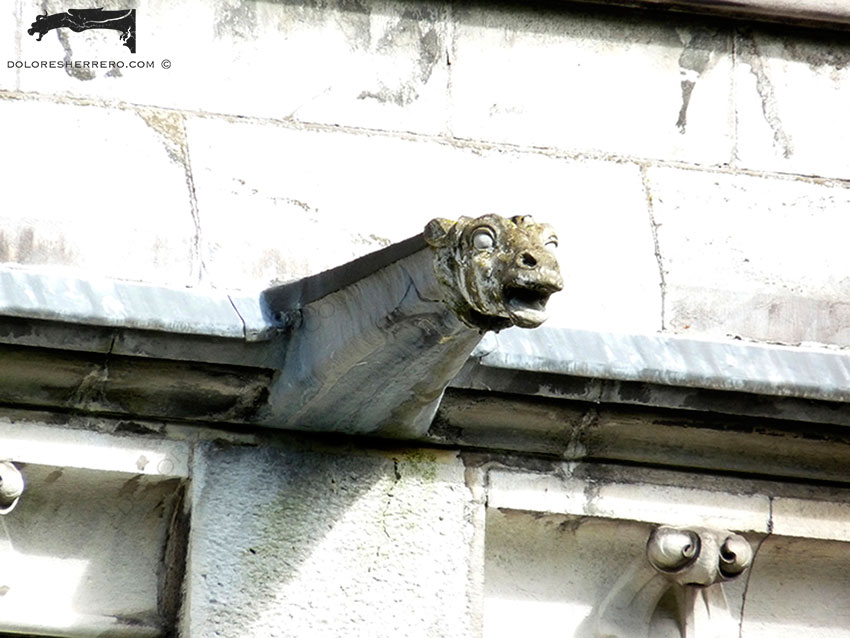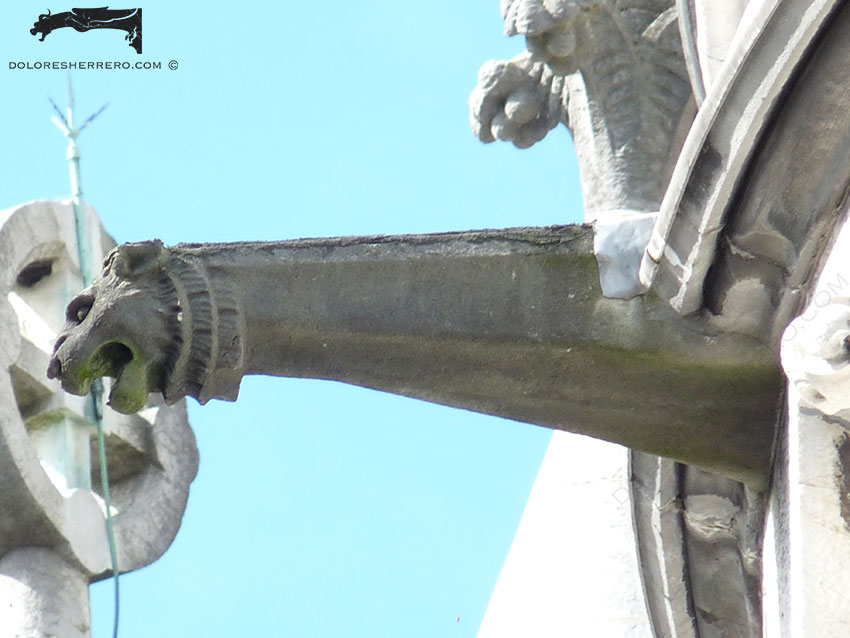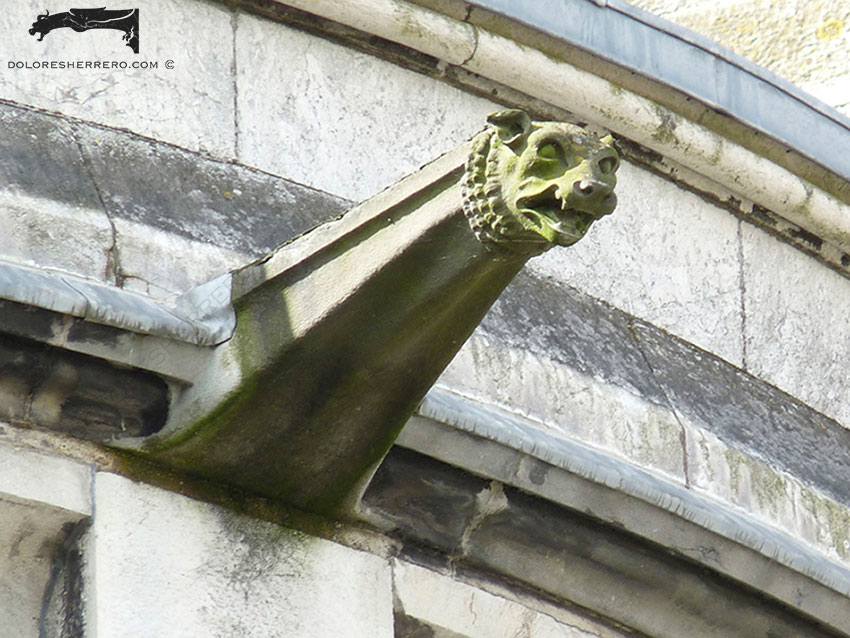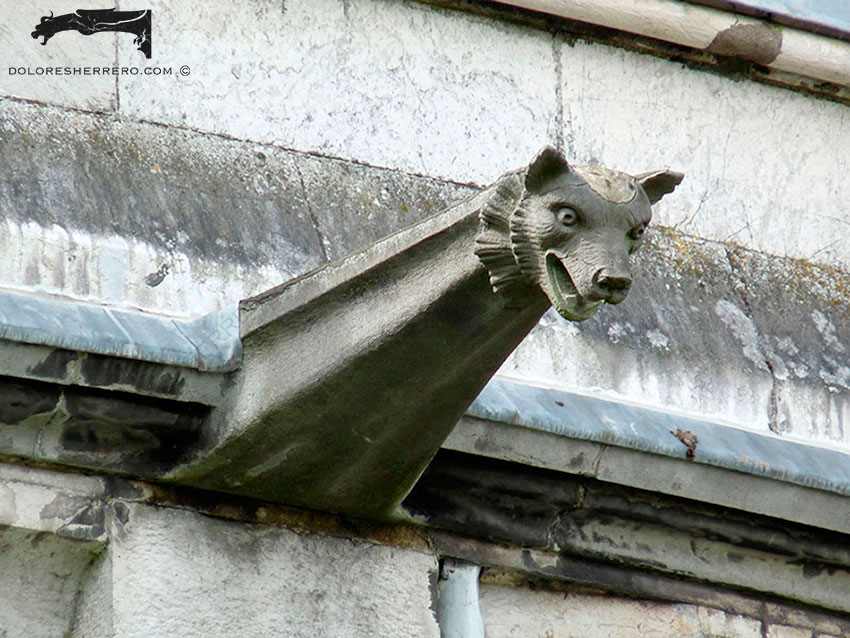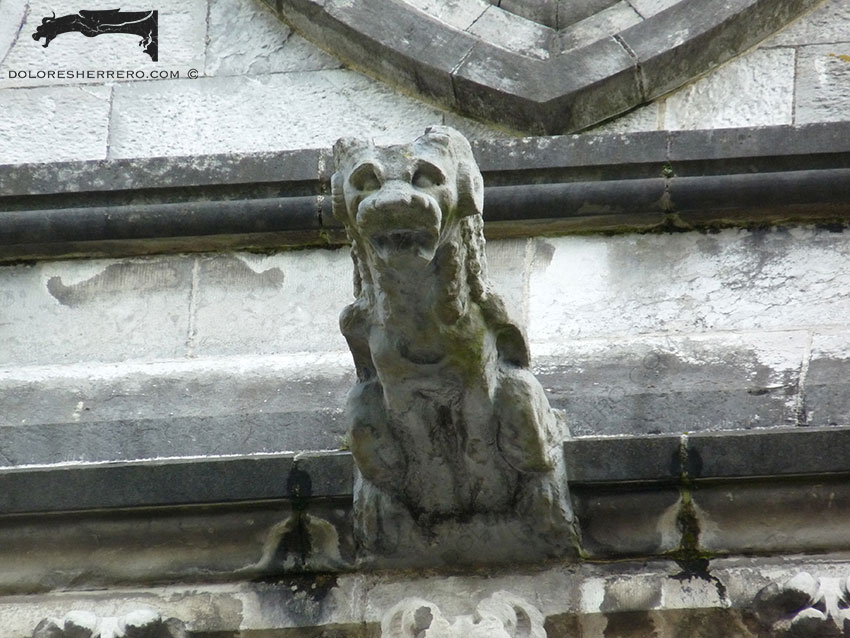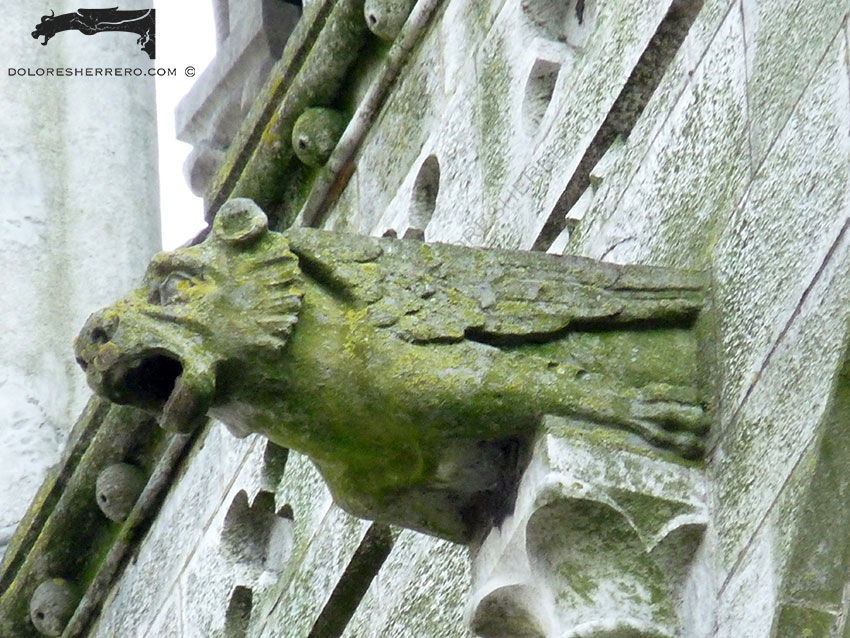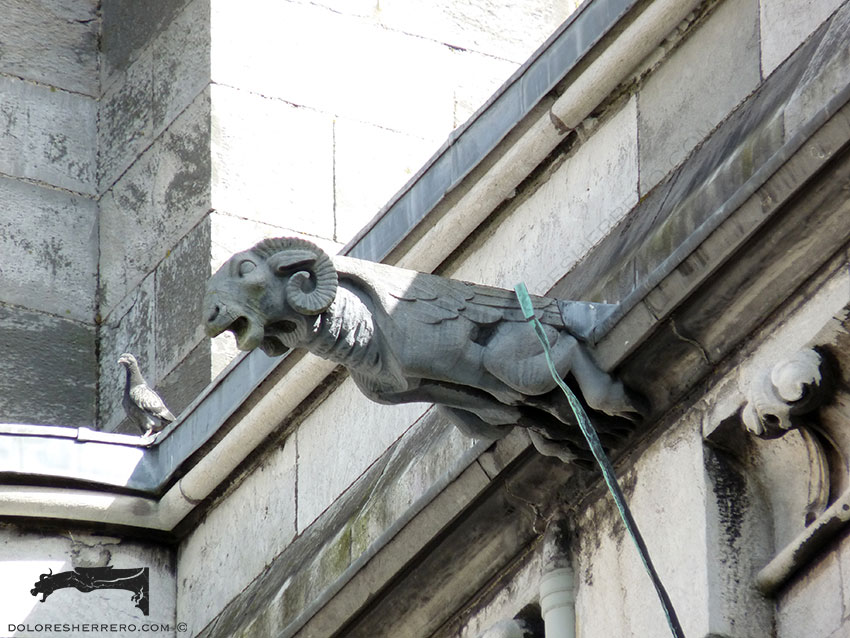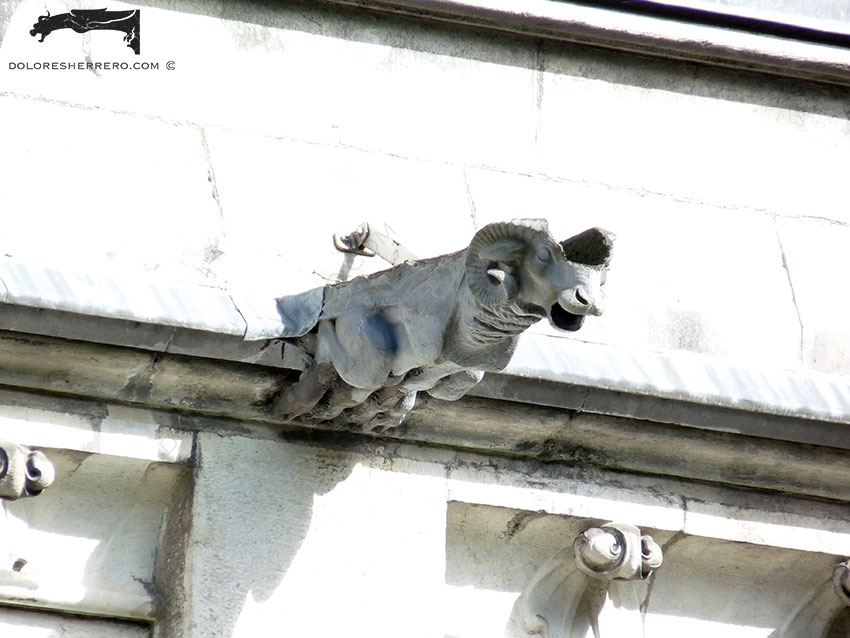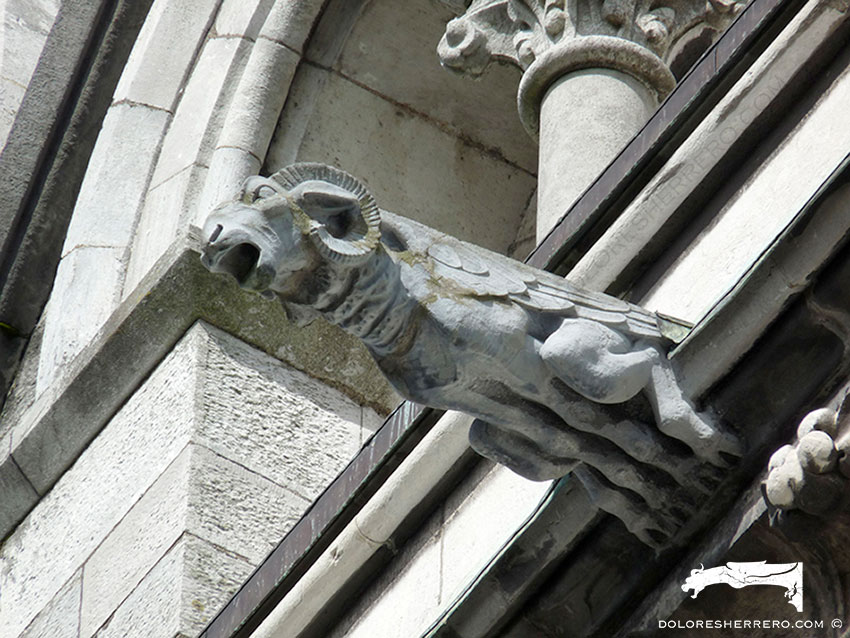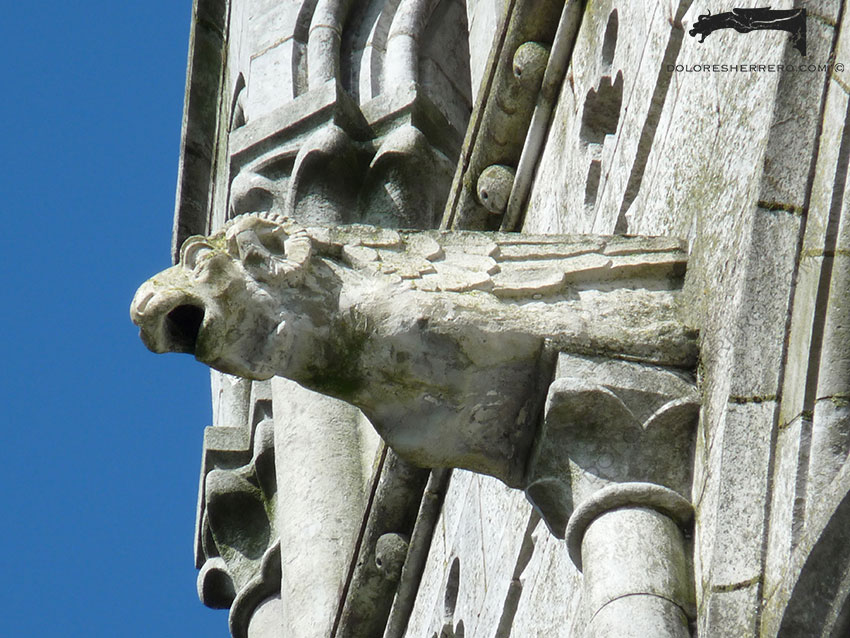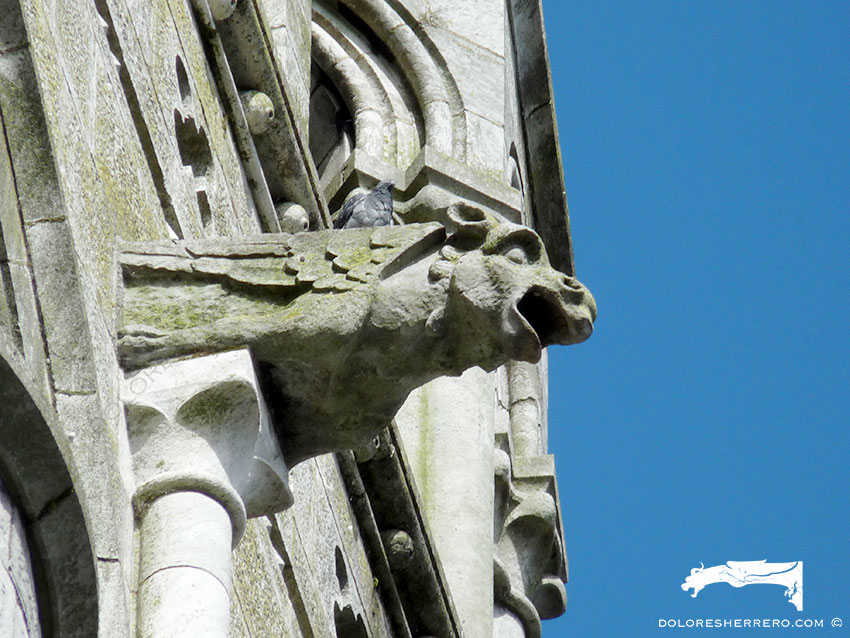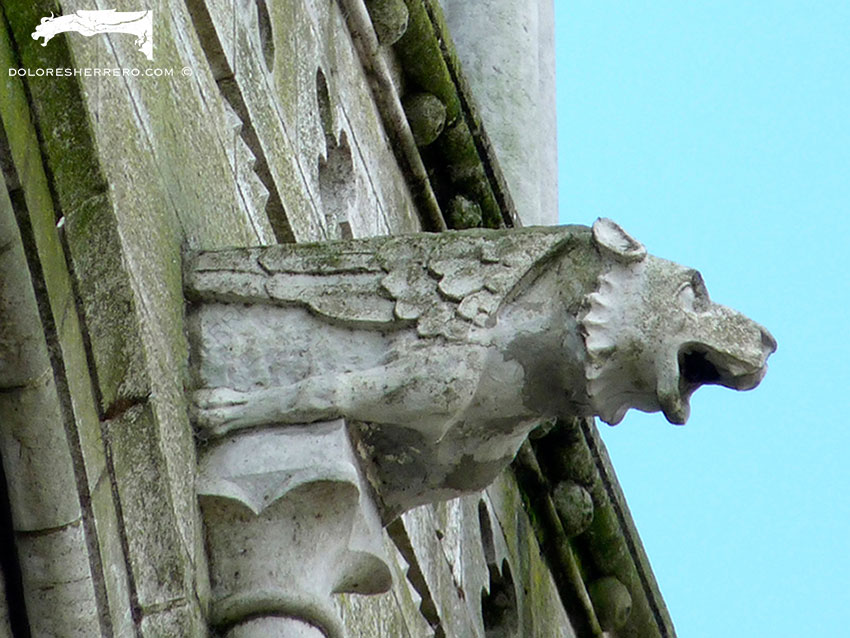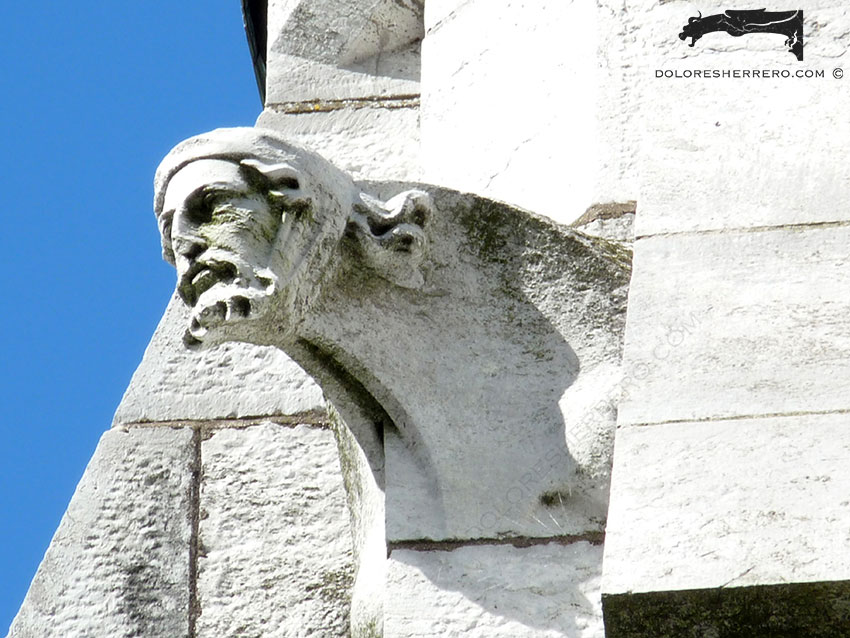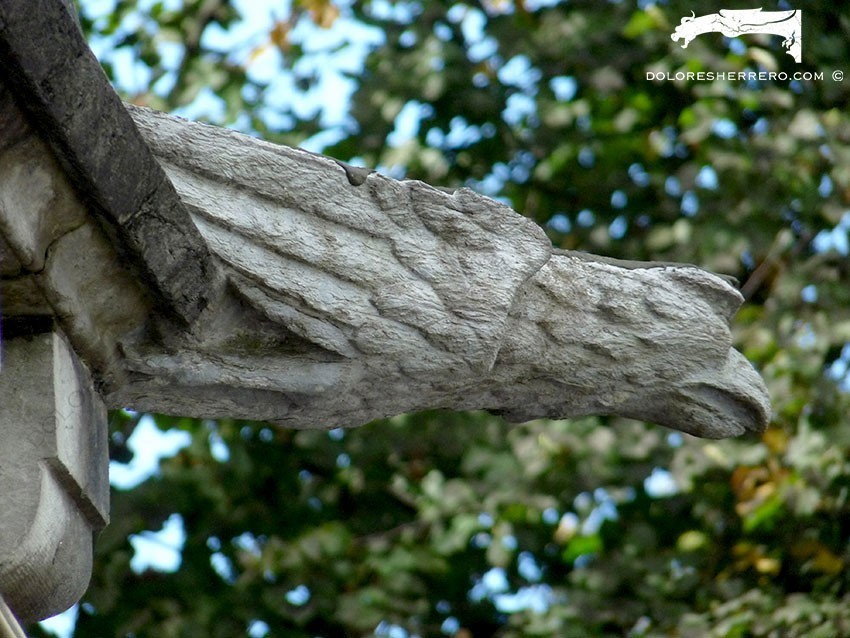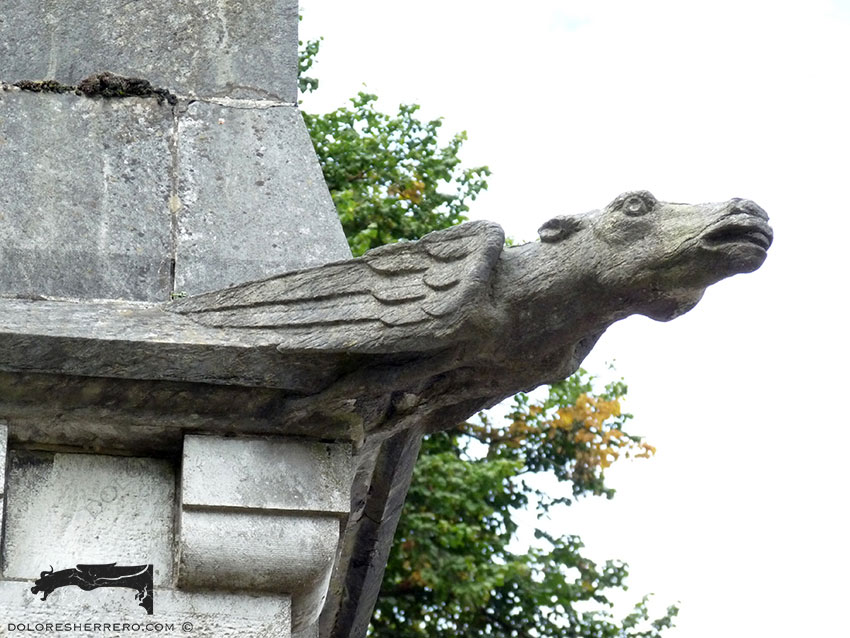In tribute to Anglo-Saxon gargoyles, my latest post invites you to discover some of the gargoyles on the cathedral in Cork, one of the prettiest places in the beautiful, welcoming country of Ireland.
The magnificent St. Fin Barre’s cathedral in Cork that you see today was built between 1865 and 1879. But let’s take a closer look at its history.
The cathedral is named after its patron saint, St. Fin Barre (6th-7th century). He was Bishop of Cork and is said to have lived as a hermit on a small island called Gougane Barra before founding the monastery in Cork.
The cathedral site dates back to the 7th century when the monastery was founded and a succession of religious buildings ensured that Christian worship continued to take place there over the centuries. The settlements that arose all around the cathedral eventually became the city of Cork.
Around 1536, during the Protestant Reformation, the cathedral became part of the official church (later known as the Church of Ireland).
In 1864, the small cathedral was demolished to make way for the magnificent structure built in its place and that you see today. The cathedral was designed by William Burges, an enthusiast of 13th century French Gothic architecture. Burges designed every part of the building, including the glass windows and 1,260 pieces of sculpture.
The cathedral was consecrated in 1870, although building work continued for years.
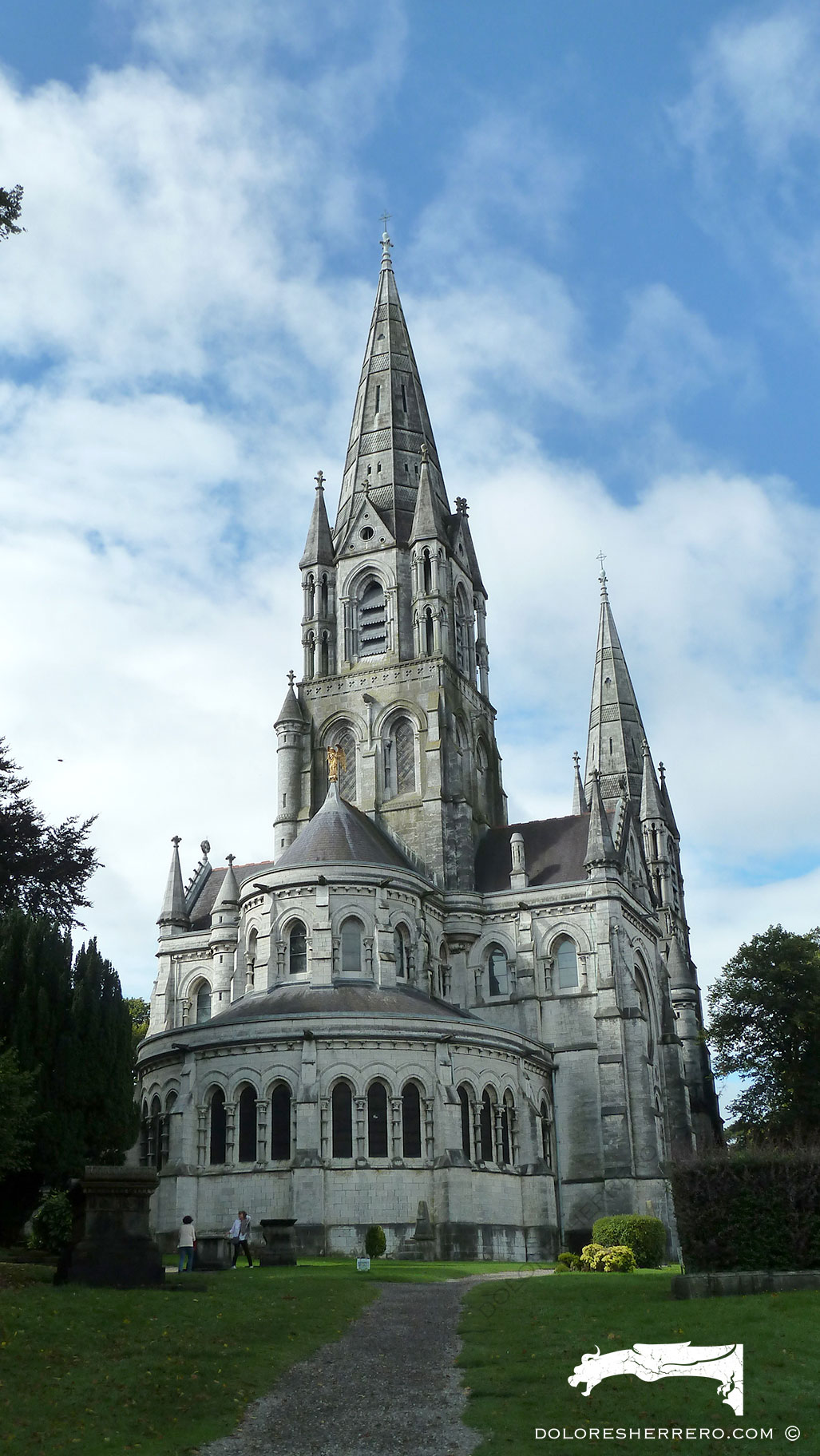
Gargoyles
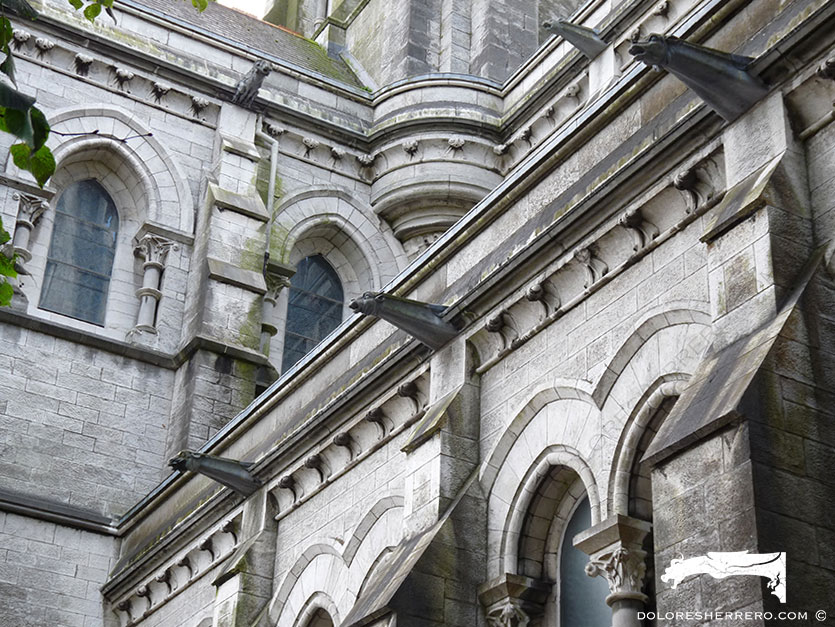
The cathedral gargoyles can be divided into two types. One of them, which you can see on the ends and outside walls of the naves, is a series of figures with elongated necks that act as spouts or gutters. The only things that change are the heads, which are all of animals (dog, sheep, lion, cow, calf), and some of them are really excellent and very expressive.
On other parts of the cathedral you can see four-legged winged creatures, in this case with head and a full body.
However, while searching for the single most fascinating gargoyle you always come across on a building with gargoyles, I found not just one but four. They are the four gargoyles flanking the doorways, and their beauty and craftsmanship are extraordinary. They depict fantastic beasts and monsters together with men and women wearing a variety of clothing. Monsters and humans create scenes loaded with symbolic meaning, probably on the theme of vices and virtues, the triumph of good over evil, and so on. Fantasy and symbolism merge in these superb, amazing gargoyles.
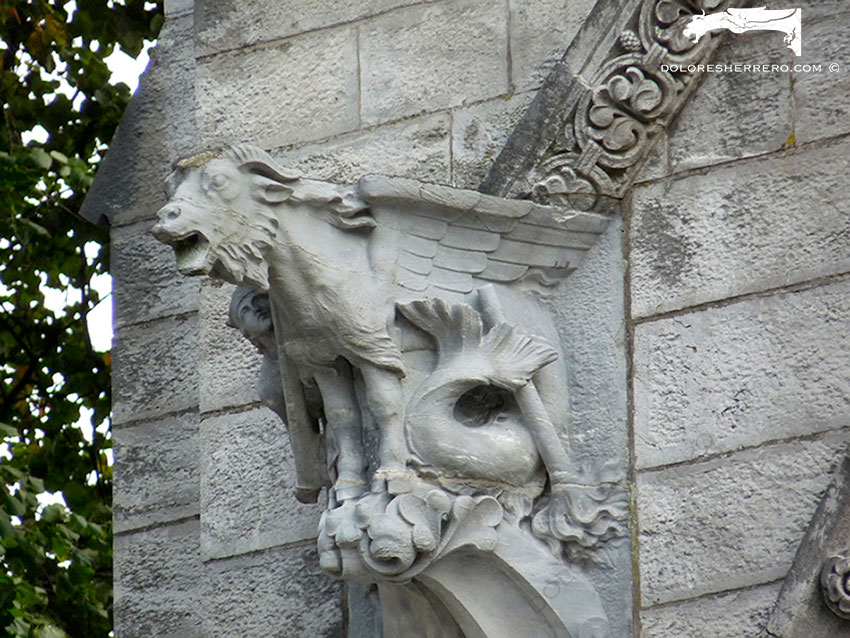
Animal monster attacked by an armed knight.

Monster restrained by a crowned woman.

Horse and crowned woman crushing a man.

Animal monster (winged monkey) with suckling pigs.
Grotesques

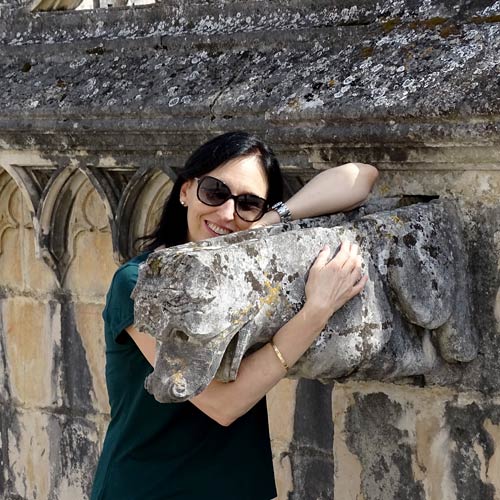
Doctor of Art History and researcher specializing in the study of gargoyles.
I am Dolores Herrero Ferrio, and my thesis, “An Approach to the Study of Gargoyles of Gothic Cathedrals in Castilla and León”, is dedicated to the study of these fascinating figures.
If you like gargoyles and art history, you will also enjoy my book, “The Gargoyle and Its Iconography,” a book I have written with great care for those interested in the world of gargoyles.
I have created my own Encyclopedia of Gargoyles, a Gargopedia to share with you, where you will discover all the secrets and wonders of these enigmatic sculptures.
I hope you enjoy this Gargopedia as much as I have enjoyed creating it, and remember that each gargoyle has a story to tell, and here you will discover them all.
